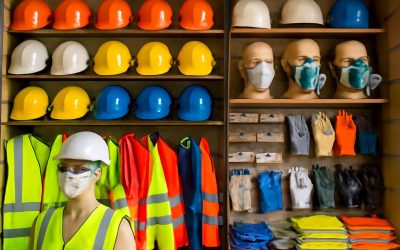
Using the right tools and equipment for work can help reduce injuries in the workplace. This is especially important for high-risk jobs where workers may be more susceptible to accidents or incidents. Using the proper safety gear can also increase productivity and decrease staff downtime due to injuries.
Safety equipment refers to clothing, protective gloves, masks and other garments designed to keep the wearer safe from specific risks or hazards. The type of PPE required depends on the hazard or risks. Examples of safety equipment include hard hats, helmets and life jackets. There are also many types of safety devices that monitor exposure to chemicals and other environmental factors like air quality.
It is a myth that employees can get away with not wearing the necessary personal protective equipment for a job that will only take a few minutes. An accident can happen anytime and even a quick job can cause severe injury. It is best to follow the hierarchy of controls and have a plan for an emergency situation before starting any work that requires the use of PPE.
Many common accidents are caused by workers using the wrong work equipment or not putting on or taking off their PPE properly. For example, it is not acceptable for an employee to go to work in the morning without a hard hat or gloves. The simplest way to avoid these mistakes is to have a checklist that allows employees to check off the items they need before leaving for work or going into a certain area.
The most basic safety equipment can include items like hard hats, gloves and safety glasses. These items offer protection against falling objects, head and eye injuries, abrasions and cuts. There are also safety gloves that provide protection against sharp objects or chemical splashes. Often, gloves are made from materials that are flame-retardant and anti-static. They may also have features like grippers to hold objects, abrasion resistance and traction.
Other safety equipment includes masks and respirators to protect the worker’s face from harmful substances. These respirators are designed to filter out harmful gases, small particles and sprays that contain viruses and bacteria. They are typically worn with a filter that is changed frequently. There are also full-face and self-contained breathing apparatus that allow an oxygen-rich environment to be breathable.
There are also other personal protective equipment that protects the eyes such as welding helmets with safety shields or safety glasses. These prevent injuries from infrared radiation, bright light and other sources of harm. There are also devices that attach to the clothes and clip to the collar, such as a radiation monitor, that detects and warns of possible overexposure to a dangerous level of exposure.
There are other items that are used to protect the body, including aprons, lab coats and ballistic vests. Other equipment includes firefighting gear, such as hoses and nozzles and first-aid kits and stretchers. There is also water safety equipment such as a life vest or ring buoy, which can be thrown to someone in the water if they are lost at sea.

0 Comments